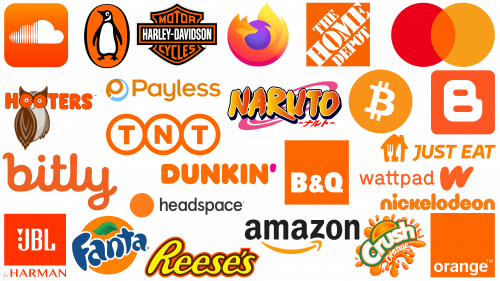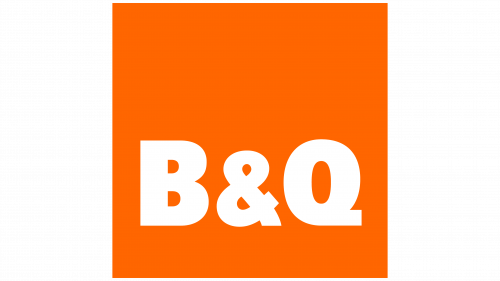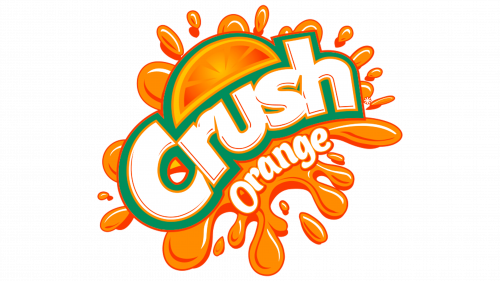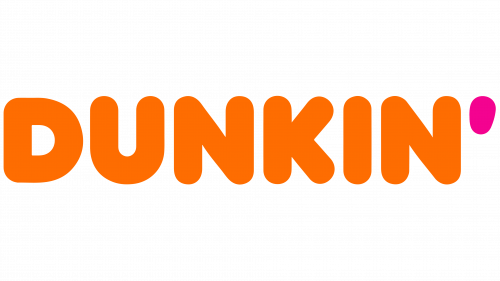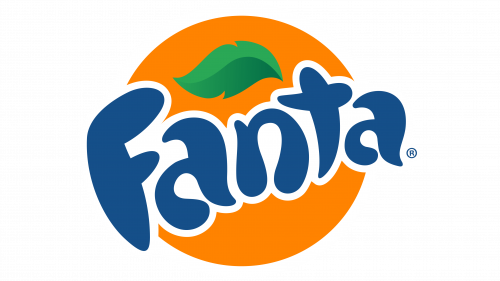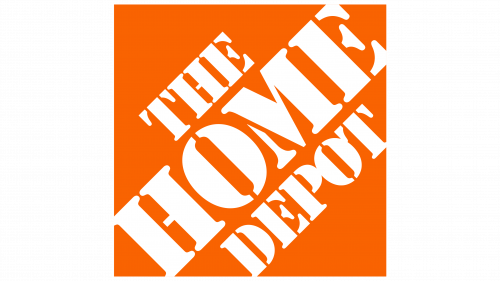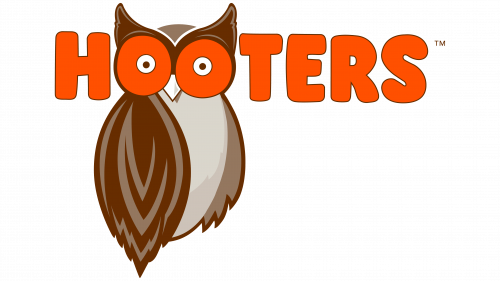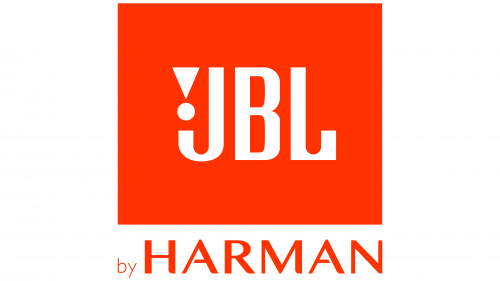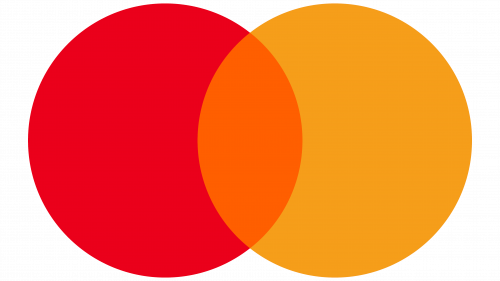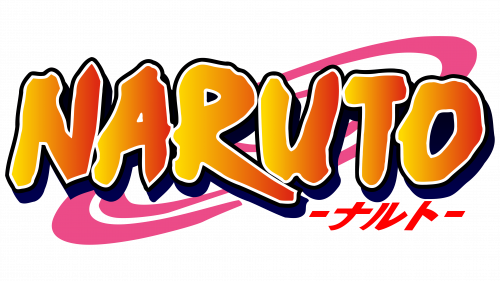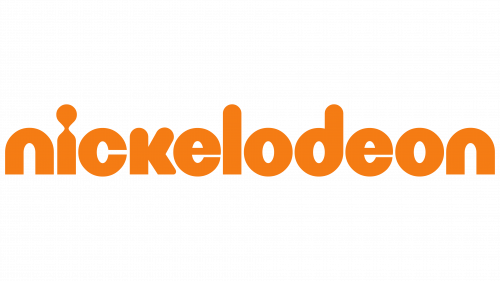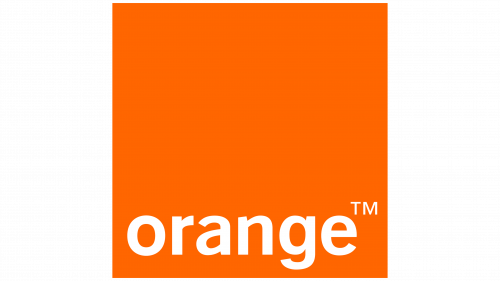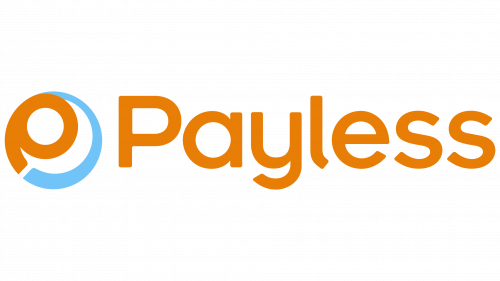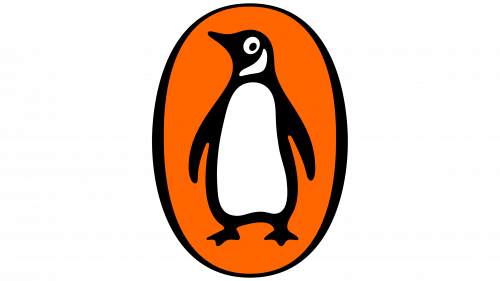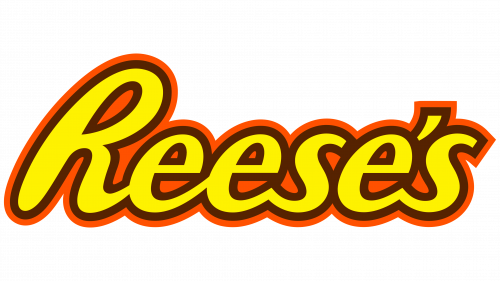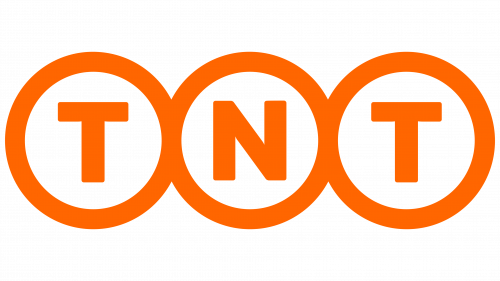In branding, color plays an important role in shaping perception and evoking emotions. Among the entire spectrum, orange stands out as a vibrant and dynamic color. Brands that use orange in their logos are trying to give a vibrant, enthusiastic, and energetic look.
This sparkling hue attracts attention and radiates warmth, evoking feelings of optimism and creativity. Unlike the ubiquitous blue, green, and red, orange has a distinct character, combining the passion of red with the cheerfulness of yellow. The result is a hue that signifies warmth and energy without being overly assertive.
Brands that use orange in their logo designs are often perceived as forward-thinking, innovative, and yet approachable. This color evokes feelings of joy, creativity, and adventurism. It’s no surprise that companies looking to create an image of innovation, boldness, or youthfulness often gravitate towards this hue.
To understand the influence and versatility of orange in branding, you only need to observe the various industries and companies that have used it. From tech firms to food and beverage companies, from fashion brands to sports teams, the use of orange signifies a bold statement of intent, presenting brands as innovative and approachable.
In the grand tapestry of branding, orange logos are not just designs but symbols that convey enthusiasm, innovation, and a commitment to life. Studying brands with orange logos highlights the color’s profound influence in shaping a brand’s personality and resonating with its audience.
Why do companies use the orange in their logos?
In the complex world of branding, color choices play a key role in articulating a brand’s essence and values. Through the lens of color psychology, certain hues evoke different emotions and perceptions, determining consumer reactions and associations.
With its vibrant and lively character, orange is often seen as a beacon of positivity. This hue radiates optimism, enthusiasm, and a sense of joie de vivre, making it preferred by brands that epitomize extroversion and adventurism. Orange, as a warm color, carries with it notions of liveliness and dynamism, in many ways similar to fiery red. However, it differs from it by its more harmonious energy, free from strong passions and aggression.
The refreshing nature of orange makes it a favorite among brands in the food and beverage sector, as it evokes feelings of freshness and rejuvenation. In addition, its boldness and confidence fit perfectly with brands that promote outdoor and adventure.
What companies have an orange logo?
In the vast spectrum of colors used to create logos, orange is less traditional than reds, blues, or the timeless black and white hues. This relative rarity gives it a unique charm, making it stand out from other logos. Organizations that use orange in their brand identity often demonstrate self-confidence, a sense of boldness, and distinction.
The bright hue evokes various positive associations. It recalls the beauty of autumn leaves, the mesmerizing charm of sunsets, and the refreshing aura of the tropics. These associations can evoke feelings of warmth, coziness, and liveliness. However, moderation is necessary. An overabundance of orange color with its innate intensity can be too strong and detract from the intended idea.
Orange is an interesting palette choice for companies seeking a balance between standing out and aesthetic appeal. It promises to stand out without being overly aggressive, conveying warmth and innovation at the same time.
Amazon
Amazon, the global online retail giant, is immediately recognizable by its emblematic logo. Although the logo design is dominated by the color black, it’s impossible not to notice the bright orange curve often referred to as the “smile.” This orange element is multifaceted in its symbolism and says a lot about the company’s ethics.
The arc seamlessly connects the letters “A” and “Z,” which speaks to the wide range of products offered by Amazon. It clearly represents the company’s promise to fulfill almost every need by offering everything from the beginning of the alphabet to the end.
This curve is more than just an arrow. It symbolizes the joy and satisfaction that the brand hopes to deliver to its customers. Online shopping can be a game of trust, and this element, in its simplicity, conveys the promise of reliability and enjoyment.
By using orange in the design, a color known for its vibrancy and creativity, Amazon is highlighting its innovative approach and commitment to staying ahead of the curve in e-commerce.
B&Q
B&Q, like Home Depot, uses bright orange in its branding to emphasize its commitment to do-it-yourself (DIY) projects. This energetic hue serves as a backdrop, emphasizing the logo’s crisp white font.
The orange hue is associated with novelty and ingenuity, which play a key role in DIY. By choosing this color, B&Q embraces these values and pushes its customers to embody their inner craftsmen and women, encouraging them to embark on a home transformation. In a market crowded with brands vying for attention, the bright orange color gives B&Q a prominent presence.
Bitcoin
When considering hues that capture the essence of revolutionary advancements, orange easily comes to the forefront. This vibrant hue, synonymous with creativity and transformation, epitomizes in the best possible way an enterprise capable of redefining financial paradigms: Bitcoin.
Bitcoin’s emblematic symbol underscores the cryptocurrency’s revolutionary intentions with its bold orange color. It’s not just about digital currency but about a new way of looking at economic exchanges and monetary values.
The bright orange circle underlying the Bitcoin logo is a testament to the boldness inherent in this financial endeavor and the pioneers who are exploring this uncharted territory. The subtle golden undertones of orange bring to mind traditional images of wealth. It combines the time-honored concept of gold as a store of value with the futuristic perspectives of digital currency.
Bitly
Founded in 2008, Bitly is a testament to the innovative spirit that thrives in the digital age. The use of a deep orange hue in the logo is not just an aesthetic decision but a foundation of the brand’s core values and ideas.
Often synonymous with enthusiasm and creativity, orange highlights Bitly’s mission to simplify the online experience. As an advanced URL shortening and link management platform, Bitly aims to optimize digital interaction by making the vast web universe more accessible to users. This ambition is vividly reflected in the brand’s rich orange color.
The rich orange color represents the zest and vigor that Bitly brings to digital. The friendly aura emanating from this color makes the brand easier to understand, making it clear that Bitly is at the forefront of digital transformation yet remains accessible and user-centric.
Blogger
Like Bitly, Blogger recognizes the influence of the orange hue, symbolizing ingenuity and boldness. Over the course of its existence, this brand has utilized a variety of orange hues, oscillating between deep, muted, and bright, vibrant tones.
The Blogger emblem reflects the essence of individual authors and their passion for running and maintaining their blogs. This particular shade of orange evokes a sense of vitality, representing a softer and more accessible energy than an assertive red.
In the vast universe of digital platforms where everyone strives to create their own unique identity, Blogger orange is a beacon for beginners and seasoned authors alike. The choice of color reflects the ever-changing nature of blogging, reflecting the changing moods, tones, and attitudes of bloggers.
Crush
Crush, which competes with Fanta in the beverage market, uses a bright orange hue in its branding, evoking sensory sensations that echo the flavor and zest of its products. This color choice not only indicates the signature orange flavor but also serves as a visual metaphor for the refreshing taste that the beverage promises.
The shades of orange in the Crush logo symbolize the brand’s commitment to flavor diversity. These hues act as an invitation, encouraging the customer to explore the vast array of flavors encapsulated in each bottle labeled “Crush.”
Crush employs innovative branding strategies, consistently integrating the orange motif into its visual uniqueness in a variety of ways. Whether it’s a subtle gradient or a bold splash, the emphasis on orange in logos highlights the brand’s heritage.
Dunkin
The vibrant and energetic shade of orange has always been associated with freshness, energy, and enthusiasm. Dunkin’, a well-known company in the fast food sector, uses this bright color in its logo. Although the visual representation of the brand has undergone several transformations over the decades, the captivating orange hue has always been present in its design.
The orange hue in the Dunkin’ logo doesn’t directly symbolize the culinary offerings; it evokes the invigorating feelings that accompany the first sip of coffee and the joy of a freshly baked donut. The choice of the orange color fits the essence of an invigorating morning – a boost of energy and a fresh start – in the best possible way. It’s a sight that can wake up even the sleepiest person on a sluggish Monday morning.
By using this vibrant hue, Dunkin’ is increasing its brand awareness and emphasizing its commitment to providing an invigorating start for its customers. Among many fast food brands, Dunkin”s orange logo stands out, serving as a beacon of motivation and a promise of an enjoyable experience.
Fanta
The enthusiasm and zest of the color orange perfectly capture the feeling associated with the dawn of a new day or the invigorating burst of citrus. Fanta, a global brand in the beverage sector, effectively utilizes this vibrant hue in its memorable logo.
Although the emblem incorporates a mix of colors, the vibrant orange stands out. This dominant hue matches the brand’s core product and reinforces its identity in a crowded beverage market. Few logos with a predominance of orange are as instantly recognizable as Fanta.
The hue used in the Fanta logo is not just aesthetically pleasing. It echoes the essence of the brand’s flagship offering, an orange-flavored fizzy soda. Thanks to this strategic use of color, consumers immediately think of Fanta’s refreshing taste when they notice the orange hue.
Firefox
The bright shades of orange and red, reminiscent of the glow of nature, blended seamlessly into the Firefox logo. These colors naturally remind me of the fox – a nimble and energetic creature, but the symbolism embedded in the emblem goes beyond this simple association.
The inclusion of the motif of “fire” unambiguously hints at dynamism, speed, and passion. By favoring the color orange to represent flames over the more intense red, Firefox subtly conveys a sense of vitality and enthusiasm without devolving into aggression or intensity. It’s a careful choice to balance energy and accessibility.
This palette, which is a harmonious blend of warm tones, allows for an eye-catching and versatile look. Against the vast array of digital brands, the Firefox emblem is a testament to the thoughtful design that evokes feelings of reliability, warmth, and unwavering performance.
Harley Davidson
Harley Davidson, an iconic name in the world of motorcycles, uses an orange hue in its emblem, symbolizing more than just brand identity. The choice of orange, especially the more intense color, is a testament to the brand’s heritage and its commitment to building machines for adventurous riders and unmatched zeal.
While many brands use bright orange to represent youth and vigor, Harley Davidson takes a slightly different route. The richer and deeper orange color emphasizes the brand’s focus on the courage, resilience, and daring spirit that the motorcycle enthusiast embodies.
This unique orange hue sets Harley Davidson apart in the motorcycle industry, emphasizing its long heritage. It subtly conveys to its customers that every Harley ride is not just about reaching a destination but about the thrill of the journey, the stories along the way, and the freedom that comes with every mile. The use of orange in the Harley Davidson logo is not just a color choice but a reflection of the brand’s ethos and the spirit of its motorcyclists.
Headspace
In branding, color plays a key role in conveying information. Headspace, a mindfulness and mental health company, harnesses the power of orange in a unique way. The choice of a bright orange circle next to the company name speaks volumes. This circle symbolizes the morning sun, heralding new opportunities and encouraging you to embark on a new journey.
Orange is a strategically important and meaningful color for a brand deeply immersed in meditation and cultivating positive thinking. This hue is commonly associated with vitality, enthusiasm, and warmth. In its simplicity, this symbol radiates an aura of optimism and rebirth.
The sun-like circle emphasizes daily renewal and echoes the brand’s core philosophy of constant self-improvement. Every day is a new chance to restore balance, find inner peace, and start living with new strength.
Home Depot
Choosing a color that inspires and inspires is of paramount importance in the realm of DIY household products and supplies. Orange, with its vibrant halftones, is just right for this purpose.
Orange represents the heart of a challenge seeker, someone ready to take on a new project with open arms. This makes it an ideal choice for a company like Home Depot, which caters to both experienced builders and budding enthusiasts. By using this hue in its branding, the company capitalizes on the inherent human drive for creativity, innovation, and improvement.
The Home Depot logo, adorned with this savory hue, serves as a beacon, inviting the customer to tap into their inner craftsman potential. The bright color seems to whisper of possible transformations – from a bare room to a cozy nook or from a neglected backyard to an inviting oasis. The stenciled font further emphasizes the DIY brand ethic, symbolizing the blueprint of imagination.
Home Depot’s choice of orange is not just a design decision. It is a strategic move that resonates with customers’ adventurous spirit, encouraging them to conceive, implement, and realize their home improvement dreams.
Hooters
In the busy U.S. restaurant scene, Hooters stands out with its unique branding and prominent use of the color orange. The choice of such an energetic hue says a lot about the Hooters brand. It’s not just about the food or the service but about standing out in a crowded food industry. In this context, orange symbolizes the brand’s fearlessness, its willingness to be different, and its commitment to staying true to its core.
The use of orange color is not limited to just the emblem. It flows into the interior design, furnishings, and, most noticeably, into the clothing of the staff. Such a complex use of color provides a complete immersion in the atmosphere of the brand. Visitors don’t just eat at Hooters; they experience the liveliness and boldness that the brand promises, embodied in a consistent orange theme.
JBL
In the realm of auditory sensations, music has an unrivaled ability to inspire and invigorate. One brand that has carved out a significant niche in the sound sector is JBL, a company that dates back to 1946. Synonymous with the highest quality sound, JBL uses the color orange in its branding to signify the vibrant and energizing experience of listening to mesmerizing tunes.
The use of orange in the JBL logo embodies the dynamism and enthusiasm often associated with exciting music sessions.
Further emphasizing the brand’s individuality is the strategic integration of specific design elements into its logo. Geometric shapes alluding to an exclamation point and assertive typography reflect JBL’s unwavering confidence in its offerings.
Just Eat
Just Eat, one of the UK’s leading food delivery companies, has made a splash with peer-to-peer food delivery. The orange color in the company’s logo is not just a design choice but a deeper meaning.
In gastronomy, orange is often associated with zest, liveliness, and culinary freshness. It brings to mind ripe, sun-soaked fruits and sumptuous dishes, making it a good fit for food-focused brands.
This color could not be better suited to reflect the camaraderie and team spirit of a brand like Just Eat, which aims to bring people together through food. In a busy market with many players, Just Eat’s distinctive orange color sets it apart from others, radiating positivity and creating a unique brand identity. With this color, Just Eat successfully conveys the combination of delicious food and the overall joy of dining out, even in a virtual space.
Mastercard
The bright orange hue intertwined with deep red has become synonymous with MasterCard, a brand that is world-famous for its distinctive logo.
The MasterCard emblem, consisting of two intersecting circles, is designed to evoke emotions of joy and possibility. It is a visual representation of bridging gaps, merging experiences, and creating seamless transactions, reflecting the company’s core purpose of connecting businesses and individuals in finance.
The MasterCard logo has undergone many transformations. Each redesign, while nuanced, has had a specific purpose, reflecting the changing ethos of the brand and the financial industry in which it operates. The logo stands out for its unique design and the values and promises it signifies. Recognized globally, this emblem has carved out a special niche, setting the benchmark for branding in the financial sector.
Naruto
Orange, bright and pulsing with energy, naturally appeals to a younger audience. This hue conjures up associations with daring escapades, boundless exploration, and a burst of unbridled ingenuity. Such energetic hues often attract people with an unquenchable thirst for life.
The creators of the “Naruto” anime brand have skillfully harnessed the appeal of orange by incorporating it as the primary color in the series’ word mark. This choice isn’t just visually appealing; it resonates deeply with the main themes and storylines of the series, which celebrates youth, growth, and relentless perseverance.
The use of a gradient effect with two variations of the orange hue enhances the depth of the logo, evoking images reminiscent of the horizon at dawn or dusk. Such visual cues subtly suggest the cyclical nature of life, the ebb and flow of hardship, and the spirit of relentless pursuit of new horizons, much like the anime characters.
Nickelodeon
Nickelodeon, the pioneer of children’s television, is a testament to ingenuity and forward-thinking. Its bright orange logo is not just a design choice but a strategic alignment with the brand’s ethos. The decision to use such a vibrant hue says a lot about the channel’s intentions and its audience.
Across a wide spectrum of colors, orange is associated with enthusiasm, energy, and adventure – emotions inherent in childhood.
Nickelodeon’s use of this hue also has a deeper meaning. Beyond simple visual appeal, it serves as an invitation, beckoning young viewers into a world of exploration and fun. When combined with other colors, such as yellow, the brand’s palette becomes even more appealing, reinforcing its position as a hub of youth entertainment.
Nickelodeon’s color choices are more than just a brand aesthetic. It is a carefully considered decision that reflects the brand’s mission: to serve, enchant, and celebrate the spirit of youth.
Orange
There is one brand in the telecommunications industry that stands out for its distinctive hue and its very name: the Orange Company. By adopting this vibrant hue in its name and visual style, the company has strategically set itself apart from traditional telecommunications businesses.
Telecommunications, historically perceived as a traditional and static sector, underwent a change in perception when Orange decided to inject bright colors into its corporate identity. In doing so, the company made clear its forward-thinking approach and willingness to change. Orange is not just introducing a color; it is introducing a philosophy.
The company’s use of the orange hue is not just an aesthetic choice. It challenges the status quo, encouraging competitors and customers to look at telecommunications differently.
The decision to name the company after this color underscores its significance. It demonstrates the company’s desire to redefine industry norms and invites audiences to join in the exploration and evolution of the digital age.
Payless
Payless, a well-known footwear retailer, has been championing the accessibility of fashionable footwear to a wide audience for over six decades. The use of the color orange in the brand’s visual representation is not just a design choice; it’s a statement.
The color orange, in the best possible way, reflects the excitement that shoppers feel when they discover top-notch footwear at a lower-than-expected price. Every time shoppers encounter this vibrant hue in a Payless store, they are reminded of the brand’s promise to deliver unbeatable value.
The color orange speaks to the brand’s innovative spirit. For Payless, it symbolizes the revolutionary approach they have taken to the footwear industry by rethinking the traditional retail model. They have not just made shoes affordable and ushered in an era where style and economy coexist harmoniously.
With its seamless blend of affordability and fashionable design, Payless has strengthened its position in the marketplace, and the bright orange color represents zest, creativity, and relentless care for its customers.
Penguin Books
The image of an adorable penguin enclosed in an orange oval has become synonymous with Penguin Books and has captured the attention of readers around the world. The emblem, which is a harmonious combination of an unlikely duo, reflects the brand’s pioneering spirit and its desire to instill a love of literature.
The inclusion of orange in the emblem may seem unexpected, especially when paired with a penguin. But it is this element of surprise that emphasizes the essence of the brand: to challenge norms, encourage originality, and open up new perspectives. The color orange, which is often associated with enthusiasm and energy, shows the publisher’s desire to inspire, enthuse, and make literature accessible to all.
The orange hue serves another important function. It immediately attracts attention, especially from the younger generation. It clearly demonstrates Penguin Books’ commitment to fostering early reading habits and making literature attractive to young people. Combining tradition and modern elements, the logo showcases appealing stories, be it classic or contemporary tales.
Reese’s
The Reese’s logo is iconic and immediately recognizable to many candy lovers. The dominant orange color stands out among all the hues used in the branding and leaves an indelible mark on the observer’s memory.
The packaging of most Reese’s products predominantly features this radiant orange hue. This is not just a design choice but a decision that evokes a special emotion in consumers. Orange, often associated with energy and warmth, captures the essence of the brand’s innovative spirit. The combination of the distinct flavors of peanut butter and chocolate is nothing short of culinary innovation.
The smooth combination of orange color with shades of yellow gives the logo a cheerful and sunny mood. It evokes a feeling of happiness, hinting at the euphoria that awaits everyone who tastes a Reese’s treat.
Soundcloud
Often associated with dynamism and vigor, orange is often found in the audio sector, highlighting the motivational power that music often possesses. Soundcloud, one of the key players in the music streaming industry, uses the energy of this color in its logo to bring ideas to life.
This hue isn’t just aesthetic; it reflects Soundcloud’s mission: to enliven the world with music and encourage listeners to discover and be inspired. The choice of logo color sets the brand apart, positioning it as a vibrant and progressive company among digital music platforms.
The characteristic cloud motif in the logo reinforces Soundcloud’s uniqueness. It cleverly plays on the brand name and symbolizes the limitless possibilities of the audio universe – like clouds floating freely in the sky.
TNT
TNT Express, a well-known international delivery service, is a subsidiary of FedEx, which has an orange hue in its emblem. The name TNT goes back to Thomas Nationwide Transport, which was the founder of the business.
The choice of orange color for TNT branding is strategic and meaningful. This hue symbolizes the promptness and warmth that consumers look for in a delivery or courier partner. The commitment to on-time delivery regardless of weather conditions and external challenges is subtly hinted at with the deeper orange hue symbolizing perseverance and resilience.
TNT’s bright orange color stands out in a competitive courier service environment where punctuality and reliability are paramount. It serves as a visual promise to customers, indicating that their packages will be delivered quickly, with warmth and care.
Wattpad
Wattpad, a well-known online platform, has become a beacon for writers and readers looking to immerse themselves in original stories. This digital haven has been around for over 15 years, but in 2018, it underwent a notable rebranding, introducing an orange logo that captures its essence. This brightly colored logo features the brand’s name, “Wattpad,” ending with a pronounced “W.”
The orange hue echoes the notions of boundless creativity and imagination – values at the heart of Wattpad. It’s a place where storytelling thrives, where authors pour their souls out on digital pages, receiving invaluable feedback from a community of passionate readers.
The choice of the color orange speaks to more than just creativity. It brings to mind unity and camaraderie. This hue serves as an invitation, an open hand gesture beckoning authors and readers to join this global community.
Conclusion of orange logos for companies
Orange is firmly entrenched in various industries, becoming the centerpiece of many iconic logos. When used wisely, this vibrant color can be a powerful branding and marketing tool, catching the eye and leaving a lasting impression.
The noticeable presence of orange in logos is evident in the tapestry of brand identity. The ubiquity of this color is due to its innate ability to stand out, especially against more neutral shades such as white, black, and gray. It acts as a beacon, forcing the viewer to pay attention. Such striking visual elements prove invaluable in an environment where brands are constantly vying for consumers’ attention.
The appeal of the color orange goes beyond its visual standout. Orange represents energy, enthusiasm, and dynamism. It radiates warmth reminiscent of sunshine or the bright hues of fall foliage. Brands that use this color in their logos are often perceived as energetic, innovative, and forward-thinking.
Orange also symbolizes creativity and motivation. It can evoke feelings of inspiration and joy, emotionally impacting the audience. When consumers interact with a brand, they are not only receiving a product or service but also an experience. The right orange hue can set the tone for that interaction, making it more memorable and intense.
While many colors have certain advantages in branding, orange, with its mesmerizing brightness and depth of meaning, remains the best choice for brands looking to make a statement, make their presence known, and resonate with their audience.
